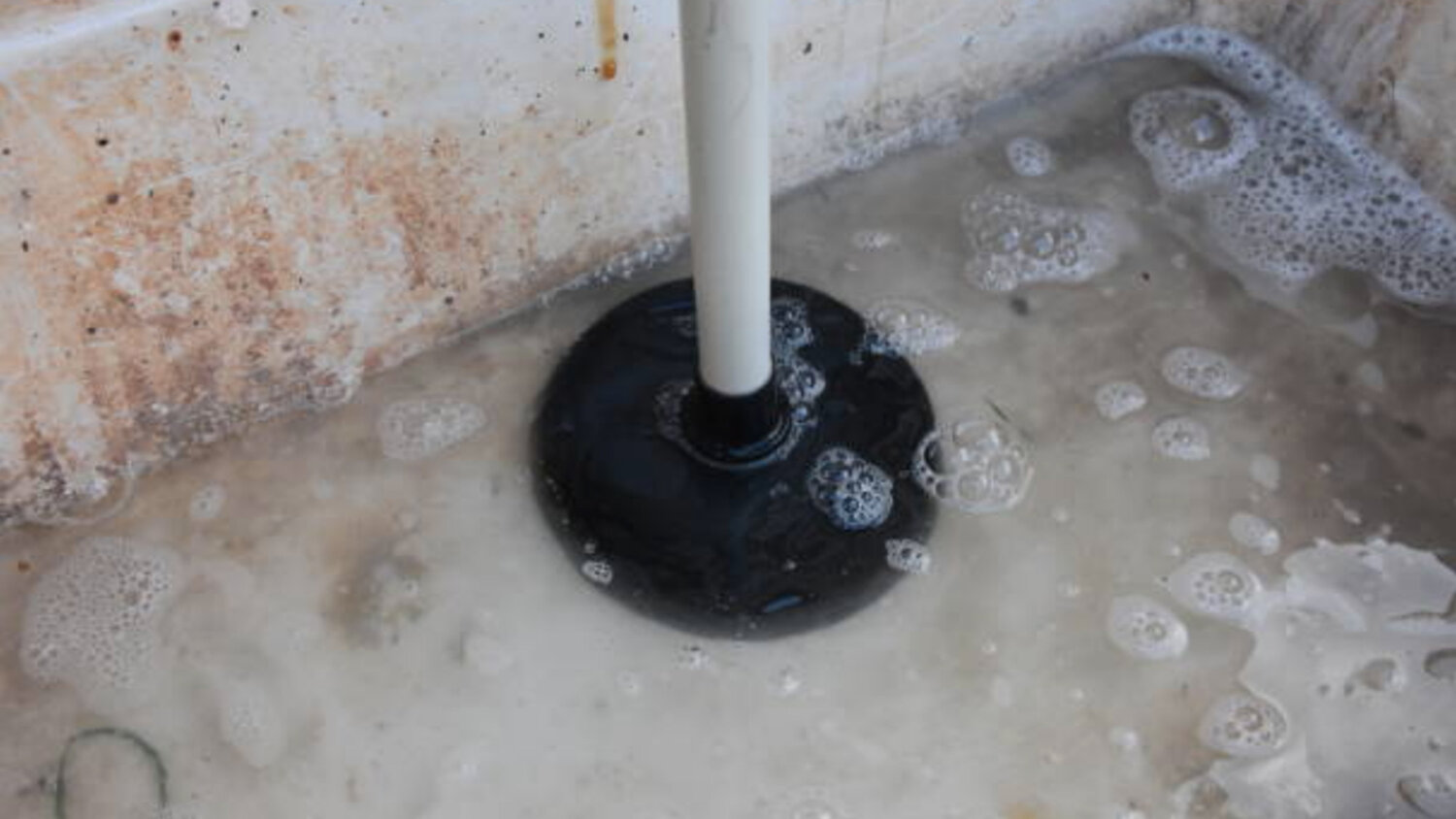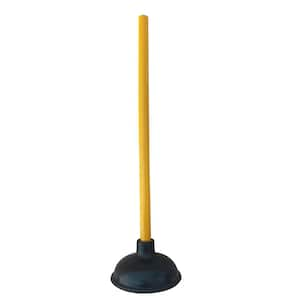Applying Plunger and Drain Cleaner: Successful Approaches
Applying Plunger and Drain Cleaner: Successful Approaches
Blog Article
What're your thoughts and feelings about A Guide to Plungers (and How to Use Them)?

Intro
Proper upkeep of home drains pipes is important for avoiding obstructions and making sure smooth water flow. One of the secret tools in every home owner's toolkit is the plunger, alongside different drain cleaners made to tackle persistent clogs properly. This post explores exactly how to make use of bettors and drainpipe cleaners properly to keep your drains pipes moving easily.
Area 1: Understanding Plungers
Sorts of Plungers
There are numerous types of plungers offered, each designed for various sorts of drains and blocks. The most common kinds consist of cup bettors, flange plungers, and accordion bettors.
Exactly How Plungers Work
Plungers work with the principle of developing stress and suction to dislodge clogs. When effectively used over a drainpipe, they produce a vacuum that can pull out particles or break up obstructions.
Selecting the Right Plunger
Picking the appropriate bettor depends upon the type of drainpipe and the nature of the blockage. Cup bettors are optimal for sinks and tubs, while flange bettors are better fit for commodes because of their layout.
Typical Blunders with Plungers
Preventing these blunders makes certain efficient plunging: incorrect seal around the drainpipe, not enough force, and not clearing surrounding debris.
Section 2: Utilizing Plungers Successfully
Prep work
Prior to plunging, guarantee the plunger covers the drain completely and forms a tight seal. Clear any type of visible debris around the drainpipe opening.
Technique
Beginning with mild diving movements to build suction. Increase pressure slowly, utilizing a consistent rhythm. Repeat as needed till the drain clears.
Troubleshooting Tips
If diving doesn't function, try readjusting the seal, using petroleum jelly for a far better seal, or utilizing a various kind of plunger.
Section 3: Comprehending Drainpipe Cleansers
Sorts Of Drain Cleansers
Drain pipes cleansers can be chemical or enzymatic. Chemical cleaners utilize solid chemicals to dissolve clogs, while enzymatic cleansers make use of all-natural enzymes to break down organic matter.
How Drain Cleansers Job
Chemical cleansers respond with obstructions to liquify them, while chemical cleansers break down organic materials like hair and grease without harming pipes.
Safety Considerations
Always wear handwear covers and eye defense when making use of chemical drainpipe cleaners. Guarantee sufficient ventilation and adhere to supplier directions meticulously.
Eco-Friendly Alternatives
Take into consideration utilizing vinegar and baking soft drink or enzyme-based cleaners for environment-friendly options that are more secure for pipes and the setting.
Section 4: Making Use Of Drain Cleaners Efficiently
Application Strategies
Pour chemical cleansers directly into the drainpipe opening. Allow them to help the advised time before purging with warm water. Enzymatic cleansers ought to sit over night.
Preventative measures
Avoid mixing various kinds of cleaners, as this can generate toxic fumes. Never make use of chemical cleaners combined with a plunger, as splashing can happen.
Managing Persistent Obstructions
For relentless obstructions, take into consideration making use of a pipes serpent or calling a specialist plumbing professional to stop damages to pipelines.
Verdict
To conclude, comprehending exactly how to use bettors and drainpipe cleaners effectively is important for keeping healthy and balanced plumbing systems. By picking the right tools and techniques, home owners can deal with minor blockages and protect against major pipes concerns down the line.
How To Properly Use A Plumbing Snake To Clear Drains
When any drain clogs in our home arise, we tend to gravitate toward the plunger and little else. In cases where the plunger and its vacuum-created pressure are not able to clear clogs, many immediately move to harmful chemicals or simply call their plumber to fix the issue.
we’re happy to help with all drain cleaning needs and concerns. This includes informing you on a few other home remedies you may have at your disposal for minor to moderate clogs, one of which is the use of a plumbing snake. Many people have never used one of these before – let’s go over the steps to take when your drain clogs and you have a plumbing snake available.
Attempt Plunger Use
The first step here, as we noted above, should indeed be to grab your plunger when you notice a drain clog and attempt to resolve it this way. If you’re unsure how to use a particular type of plunger, our plumbers can answer any questions you have. If this doesn’t do the trick, however, you move on to the snake.
Locate And Prepare Snake
A plumbing snake is a metal or plastic device that’s generally about a quarter of an inch thick. It’s design with significant extensions, meant to reach down into your clogged drain and push the clog out. Snakes also contain drain augers that will latch onto and push stubborn blockages.
If your plunger doesn’t clear a clog, locate your snake and bring it to the drain in question. We also recommend keeping a bucket nearby to collect the clog once you pull it out, plus we’d advise wearing goggles and possibly protective gloves.
Feed Snake
Once you’re ready to go, feed the snake slowly down the drain, using the crank device it comes with to keep it moving until it finds the clog. Once this happens, much of the clog will be latched onto the coil so you can pull it out, while the rest will simply break up and flow downward.
Detach Debris
Remove the snake slowly from the drain, and once you’ve done so, pick off any debris that’s stuck to the coil. This is another area where wearing gloves is a must.
Flush Drain
Finally, take a few minutes to ensure the snake has done its job correctly. If you’ve been using it on a toilet, flush the toilet a couple times and make sure everything flows well. If you’ve used it on a different drain, flush it with some room temperature water.
https://www.mybuddytheplumber.com/blog/how-to-properly-use-a-plumbing-snake-to-clear-drains/

Application Strategies
Pour chemical cleansers directly into the drainpipe opening. Allow them to help the advised time before purging with warm water. Enzymatic cleansers ought to sit over night.
Preventative measures
Avoid mixing various kinds of cleaners, as this can generate toxic fumes. Never make use of chemical cleaners combined with a plunger, as splashing can happen.
Managing Persistent Obstructions
For relentless obstructions, take into consideration making use of a pipes serpent or calling a specialist plumbing professional to stop damages to pipelines.
Verdict
To conclude, comprehending exactly how to use bettors and drainpipe cleaners effectively is important for keeping healthy and balanced plumbing systems. By picking the right tools and techniques, home owners can deal with minor blockages and protect against major pipes concerns down the line.
How To Properly Use A Plumbing Snake To Clear Drains
When any drain clogs in our home arise, we tend to gravitate toward the plunger and little else. In cases where the plunger and its vacuum-created pressure are not able to clear clogs, many immediately move to harmful chemicals or simply call their plumber to fix the issue.
we’re happy to help with all drain cleaning needs and concerns. This includes informing you on a few other home remedies you may have at your disposal for minor to moderate clogs, one of which is the use of a plumbing snake. Many people have never used one of these before – let’s go over the steps to take when your drain clogs and you have a plumbing snake available.
Attempt Plunger Use
The first step here, as we noted above, should indeed be to grab your plunger when you notice a drain clog and attempt to resolve it this way. If you’re unsure how to use a particular type of plunger, our plumbers can answer any questions you have. If this doesn’t do the trick, however, you move on to the snake.
Locate And Prepare Snake
A plumbing snake is a metal or plastic device that’s generally about a quarter of an inch thick. It’s design with significant extensions, meant to reach down into your clogged drain and push the clog out. Snakes also contain drain augers that will latch onto and push stubborn blockages.
If your plunger doesn’t clear a clog, locate your snake and bring it to the drain in question. We also recommend keeping a bucket nearby to collect the clog once you pull it out, plus we’d advise wearing goggles and possibly protective gloves.
Feed Snake
Once you’re ready to go, feed the snake slowly down the drain, using the crank device it comes with to keep it moving until it finds the clog. Once this happens, much of the clog will be latched onto the coil so you can pull it out, while the rest will simply break up and flow downward.
Detach Debris
Remove the snake slowly from the drain, and once you’ve done so, pick off any debris that’s stuck to the coil. This is another area where wearing gloves is a must.
Flush Drain
Finally, take a few minutes to ensure the snake has done its job correctly. If you’ve been using it on a toilet, flush the toilet a couple times and make sure everything flows well. If you’ve used it on a different drain, flush it with some room temperature water.
https://www.mybuddytheplumber.com/blog/how-to-properly-use-a-plumbing-snake-to-clear-drains/

Do you really like reading up on How to Use a Plunger to Unclog a Toilet or Drain? Post a remark directly below. We'd be delighted to hear your thoughts about this article. We hope that you come back again in the future. In case you enjoyed reading our blog entry plz don't forget to pass it around. Many thanks for being here. Return soon.
Click Here! Report this page